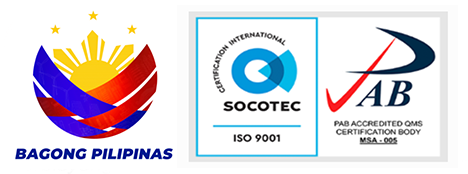Of the 7,107 islands of the country, 31 belong to this tiny municipality.
Located in the far east of Palawan, Cagayancillo may not have managed to ring a few bells. It may not be as known compared to Coron and El Nido, but this little sanctuary has something to boast off as its own.
The municipality of Cagayancillo is politically subdivided into twelve barangays, which are islands and islets. These are sprawled against the background of deep blue waters of the Sulu sea. Nonetheless, the name Cagayancillo is the Spanish word for ‘little Cagayan’.
Cagayancillo’s geographically challenging area is one thing that sets it apart from other municipalities of Palawan, as travelling to Cagayancillo is completely a different story. They say that this is not for the fainthearted.
Be that as it may, it can be accessed through four different routes, first, directly from Puerto Princesa City with approximately 20-30 hours of maximum travel time. Second from Roxas, Palawan that takes about 12-16 hours of travel time. Third, it can also be accessed from Dumaguete, Bayawan through Cebu City with a similar travel time of 12-16 hours. Lastly, it can be best accessed through the nearest route that is Iloilo City, specifically in Anini-y, Antique, which approximately takes 8-10 hours of travel.
However, each access route to and from Cagayancillo depends on the weather and sea condition. It can even be longer than the approximated travel time given the winds and waves battling through. Nonetheless, the means of transportation to the area is very seldom and costs thousands of pesos.
Incidentally, the remoteness of Cagayancillo brings to the fore how poverty-stricken the municipality is. More than half of the total population or 63% of 7,116 are considered poor households in Cagayancillo.
Having known of the geographical terrain and the rate of poverty of the municipality, Kalahi-CIDSS turned this challenge into an opportunity. A community-driven development (CDD) project, Kalahi-CIDSS is one of the government’s primary poverty reduction programs implemented by the Department of Social Welfare and Development.
Being a CDD project, it empowers communities through greater participation of the people in local governance, particularly those involving poverty alleviation measures. Kalahi-CIDSS allows communities to decide for themselves what project they need the most. It highlights the participation of each individual in identifying their needs, even in the implementation of the sub-project they have identified.
When Kalahi-CIDSS came in 2012, it turned the locals into being more proactive on reducing poverty in the area. They did this by engaging locals to attend barangay assemblies and encouraging them to become volunteers of the Project. As such, men and women actively involved themselves not only in assemblies but also in sub-project preparation and implementation.
By then on, locals of Cagayancillo were able to prioritize three sub-projects during their Municipal Inter-Barangay Forum (MIBF). These were chosen as to what they think is the most viable and feasible based on the criteria set by the KC volunteers themselves.
The prioritized sub-projects are: storage warehouse with solar dryer, rainwater catchment with 9 water storage tanks, and a 1-unit 3-classroom elementary school building of barangays Convento, Magsaysay, and Mampio, respectively. Consequently, the total Kalahi grant for Cagayancillo amounted to Php 5,400,000.00.
The three barangays are yet to finish their sub-projects. But they feel that even when they are not finished yet, they have already done so much to help improve their condition in the area. They are very grateful for the opportunity given by Kalahi since now they knew that they can be part of change they wanted to see in their community.
Cagayancillo may not be of the scenic type of place that people would want to go to, but what makes this place exceptional is its people. All of them, from the local government unit, the barangay level down to the locals, who have started and will continue making the change to improve their condition, locals who are largely inspired and continue to be inspired by the principles of Kalahi-CIDSS. ###
![]()


